Cunningham concluded that "as I've dug into and learned its ins and outs for this review, I've warmed to it more", but argued that the OS was facing similar "public perception" issues to Windows Vista and Windows 8. In addition to increased reliability, the supported processors increase security capabilities at the chip level. These processors provide virtualization extensions and virtualization performance improvements. Windows 11 supports virtualization-based security which enables several security capabilities, including memory integrity, also known as hypervisor-protected code integrity . HVCI also provides driver control and ensures that all drivers loaded meet a policy of allowed drivers set by Microsoft and the user.
The United States Department of Defense requires virtualization-based security on Windows 10 for their devices. In partnership with our OEM and silicon partners, we will be enabling VBS and HVCI on most new PCs over this next year. And we will continue to seek opportunities to expand VBS across more systems over time.
Warren noted that he rarely used the Widgets panel or Microsoft Teams, citing that he preferred the weather display that later versions of Windows 10 offered, and didn't use Teams to communicate with his friends and family. He also acknowledged the expansion of Microsoft Store to include more "traditional" desktop applications. Overall, he concluded that "I wouldn't rush out to upgrade to Windows 11, but I also wouldn't avoid it. After all, Windows 11 still feels familiar and underneath all the UI changes, it's the same Windows we've had for decades." As part of the minimum system requirements, Windows 11 only runs on devices with a Trusted Platform Module 2.0 security coprocessor. According to Microsoft, the TPM 2.0 coprocessor is a "critical building block" for protection against firmware and hardware attacks.
In addition, Microsoft now requires devices with Windows 11 to include virtualization-based security , hypervisor-protected code integrity , and Secure Boot built-in and enabled by default. The operating system also features hardware-enforced stack protection for supported Intel and AMD processors for protection against zero-day exploits. Citing security considerations, the system requirements for Windows 11 were increased over Windows 10. While the OS can be installed on unsupported processors, Microsoft does not guarantee the availability of updates. Windows 11 also drops support for 32-bit x86 CPUs and devices which use BIOS firmware. Internet Explorer has been replaced by the Chromium-based Microsoft Edge as the default web browser, and Microsoft Teams is integrated into the Windows shell.
Microsoft also announced plans to allow more flexibility in software that can be distributed via Microsoft Store, and to support Android apps on Windows 11 . Based on this comparison table, you can see that Windows 11 is more hardware-hungry. Bear in mind that these are minimum system requirements to install these Operating Systems. Microsoft does not recommend downloading Windows 11 on PCs that do not meet its standards, such as minimum 4GB of RAM, 64GB storage, TPM chips, and supported processors. Windows 11 will not come as an automatic update for unsupported devices, but users will be able to download it off the web. Microsoft has an app called PC Health Check, which can be used to determine if a PC is ready for Windows 11.
Some PCs also have TPM chips installed but disabled and you can turn them on by going into your BIOS settings. At least 16GB of RAM The basic system requirements of Windows 11 differ significantly from Windows 10. Windows 11 only supports 64-bit systems such as those using an x86-64 or ARM64 processor; IA-32 processors are no longer supported. Thus, Windows 11 is the first ever consumer version of Windows not to support 32-bit processors and 16-bit software . The minimum RAM and storage requirements were also increased; Windows 11 now requires at least 4GB of RAM and 64GB of storage. The compatibility list includes the Intel Core i7-7820HQ, a seventh-generation processor used by the Surface Studio 2, although only on devices that shipped with DCH-based drivers.
As I mentioned earlier, these recommended requirements are the minimum computer hardware specs you need to use the Operating Systems. I learned this the hard way when I installed Windows 11 on a VMWare virtual PC with 4GB of RAM. Windows 11 has higher technical requirements than Windows 10, is possible to install Windows 11 on devices that don't meet the minimum requirements. Upgrading unsupported hardware to Windows 11 will require you to install the update manually using an ISO.
There is a different set of minimum minimum requirements your PC will have to meet including 4GB of RAM, 64GB of storage space, and two-core 64-bit 1 GHz processor. While Windows 11 brings an eye-catching new design and some handy productivity features, that's not all that Microsoft changed in the new operating system, which entered general availability this week. For businesses, the even bigger updates are under the hood—particularly when it comes to security. Windows 11 is a "huge, huge win" on security because it sets a far stronger baseline through a number of adjustments, said David Weston, Microsoft's director of OS and enterprise security, in an interview with CRN last week.
Major security updates from Windows 10 include raising the TPM and CPU requirements and turning key security features on by default in Windows 11 without hobbling PC performance, Weston said. A redesigned user interface is present frequently throughout the operating system, building upon Fluent Design System; translucency, shadows, a new color palette, and rounded geometry are prevalent throughout the UI. A prevalent aspect of the design is an appearance known as "Mica", described as an "opaque, dynamic material that incorporates theme and desktop wallpaper to paint the background of long-lived windows such as apps and settings".
In October 2019, Microsoft announced "Windows 10X", a future edition of Windows 10 designed exclusively for dual-touchscreen devices such as the then-upcoming Surface Neo. Legacy Windows applications would also be required to run in "containers" to ensure performance and power optimization. Microsoft stated that it planned to release Windows 10X devices by the end of 2020. This means that devices can upgrade to Windows 11 and critical apps and devices will simply work. Raising the Windows 11 minimum system requirements enables us to better support apps and hardware for drivers and devices.
Feedback also shows us that unsupported hardware is more likely to have older drivers that are incompatible with new OS features such as VBS. Supported hardware also comes with modern drivers, which helps ensure not only the reliability we mentioned earlier, but also great hardware compatibility. Original equipment manufacturers can still ship computers without a TPM 2.0 coprocessor upon Microsoft's approval. Some third-party software may refuse to run on unsupported configurations of Windows 11.
Windows 11 SE was announced on November 9, 2021, as an edition exclusively for low-end devices sold in the education market, and a successor to Windows 10 S. It is bundled with applications such as Microsoft Office for Microsoft 365, Minecraft Education Edition, and Flipgrid, while OneDrive is used to save files by default. Windows 11 SE does not include Microsoft Store; third-party software is provisioned or installed by administrators.
Some of those features can only be enabled by default because of the TPM 2.0 requirement and higher CPU requirements for Windows 11, Weston said. This is the continuation of the ongoing Windows-as-a-Service model. Existing Windows 10 PCs will be eligible for a free upgrade, and Insiders will start to receive new builds in both Dev and Beta channels.
However, there are new minimum system requirements for Windows 11 and not all PCs will meet these. Microsoft has released a free PC Health Check app that will show if your PC is ready for Windows 11. The biggest change to Windows 11 is its more stringent hardware requirements. If your PC is recent, say, within the past five years, you should be alright, but older devices may be stuck with Windows 10 for the foreseeable future.
That's not to say the company won't be providing security updates to Windows 10, but that's about as much as you can hope for. Since the controversial hardware decision—implemented for both performance and security reasons—Microsoft added Windows 11 support for some older computers, but the company still recommends against it. Windows 11 includes several new features, such as improved snapping, Dynamic Refresh Rate, and Direct Storage, but the biggest change the operating system brings could be something that people never see. A recent Microsoft Mechanics video breaks down the performance improvements included in Windows 11.
Compared to devices running Windows 10 on the same hardware, PCs running Windows 11 should have better app performance, improved battery life, and quicker resume from sleep times. For those who are using a PC that won't upgrade, and who aren't ready to transition to a new device, Windows 10 is the right choice. We will support Windows 10 through October 14, 2025 and we recently announced that the next feature update to Windows 10 is coming later this year. Whatever you decide, we are committed to supporting you and offering choice in your computing journey.
If you want to see the full Windows 11 minimum system requirements, you can visit this page. Following the results of our testing, we are making a small number of additions to the compatible processor list , but otherwise will maintain the minimum system requirements as originally set. Microsoft designed Windows 10 to run on older hardware, but Windows 11 is more progressive. The five-year-old 7th generation Intel processors are not part of hardware requirements specified for Windows 11.
Also, Microsoft has included trusted platform modules , specialized security chips that carry out cryptographic operations and protect passwords on a device. They are affixed to the PC's motherboard and are a staple in almost every mid-range and premium laptop. They are useful for enterprises that need special security measures beyond the logins that are based on the usual passcode or password.
Windows 11 is the first version update to the most widely used PC operating system in the world in more than five years. This is because Virtualization Based Security has become a keystone concept in Microsoft's approach to security. VBS runs Windows on top of a hypervisor, which can then use the same techniques that keep guest operating systems apart to create secure spaces that are isolated from the main OS.
Doing that requires hardware-based virtualization features, and enough horsepower that you won't notice the drag on performance. The virtualization service allows users to stream a Windows desktop to any of their devices and from any location, effectively turning the host device into a thin client. In January 2021, it was reported that a job listing referring to a "sweeping visual rejuvenation of Windows" had been posted by Microsoft. A visual refresh for Windows, developed under the codename "Sun Valley", was reportedly set to re-design the system's user interface. To check for Windows 11 compatibility, download and run the PC Health Check app, which will identify specific compatibility issues that prevent an upgrade. Older hardware is less likely to pass Windows 11's stringent compatibility checks; for example, most Intel 7th Generation Core processors are not on the list of compatible CPUs, nor are PCs built using AMD Zen 1 processors.
PCs purchased in 2016 or earlier are almost certain to be unsupported. As familiar as Windows 11 might be, there's still a lot that's changed. The programs you know are all still available and supported, but they'll be joined by Android apps, running as windowed programs on the desktop (though not right away — Microsoft's still fine-tuning that feature). Your favorite multitasking functions get upgraded with new Snap Layouts, and virtual desktops are getting better with more flexibility and features.
For the past six years, Windows users have watched on the sidelines as the tech landscape changed at a breakneck pace. When Microsoft's sporadic "feature updates" did arrive, they were often plagued with bugs, some so damaging the updates were suspended. And yet, despite its rocky path, Windows 10 will go down as a success, a stopgap to the mess its predecessors left behind. It brought back the traditional desktop interface, gave PC owners reliable performance, and popularized touchscreen displays and hybrid 2-in-1 laptops.
Even the newly-released AutoHDR feature is available on both Windows 11 Home and Pro editions. So it's safe to say that neither of the editions will disappoint you in terms of gaming performance. That said, Windows 11 Pro offers you a larger ceiling for hardware expansion. It supports up to 2 CPU sockets, 128 cores, and up to 2TB of RAM, whereas Windows 11 Home supports 1 CPU socket, 64 cores, and up to 128GB of RAM.
Simply put, Windows 11 Home is more than enough for most users, even for hardcore gamers. With Application Guard, websites and Office files run in an isolated Hyper-V container so anything that happened in the container is isolated from the desktop OS. This virtualization-based technology is also used in other Windows security features, including Credential Guard and Hypervisor Code Integrity. With significant new hardware requirements for Windows 11, it seems likely that Microsoft will have to keep the two versions updated in parallel for quite some time. Most current corporate devices should support Windows 11, as most of its key features have been part of the Windows hardware certification process since Windows 8.
The real brake on any corporate rollout will be the requirement to have an 8th-generation or later Intel CPU . You're going to have a tougher time if you own an older PC that doesn't meet Microsoft's hardware requirements. You'll need a compatible Intel, AMD or Qualcomm processor; 4GB of RAM; and at least 64GB of storage. Also, you'll have to enable Secure Boot and TPM 2.0 , features that should make it harder for spyware and malware to attack your OS. Microsoft's PC Health Check app can help you see if your system is ready for Windows 11.
This is why you need a newer computer to operate Windows 11 at full capacity. As business users often deal with especially sensitive information, there are also some extra security features in Windows 11 Pro. This feature encrypts data stored on your hard drive so no one else can access it. Even if your computer is stolen, your files are protected from users other than yourself. Microsoft is also adding new, stricter security requirements for Windows 11.
You will now need a PC that includes a Trusted Platform Module 2.0, a security coprocessor that's not present on all PCs. (What's a TPM?) A TPM includes a hardware-based random number generator, and can issue cryptographic keys to protect your data. (Microsoft and AMD announced a complementary technology called Pluton in late 2020, originally developed for the Xbox, though Windows 11 PCs don't appear to require it.) Your PC must also support UEFI and be Secure Boot-capable.
We suspect it will still be new to many Windows 11 users, and having it pre-installed means more will take a look. Microsoft promises that "you can automate virtually any Microsoft and third-party application on Windows and exchange data between different applications and web pages," features of substantial value. Windows 11 will be provided as a free update to all eligible devices that are currently running Windows 10. Eligibility for automatic upgrade is based on certain minimum hardware requirements. At last, everything comes to the performance and peace of mind for users.
Microsoft has also stated that unsupported systems are likely to have 52% more kernel crashes compared to the supported devices. Also, the company claims that systems that meet Windows 11 requirements are expected to have a 99.8% crash-free experience. Although Microsoft has already revealed a walkaround to bypass the TPM 2.0 and processor requirements, the company has also warned users against installing the operating system on unsupported devices.
Windows 11 Upgrade From Windows 10 Requirements The new Windows OS takes cues from its smartphone relatives, simplifying basic settings changes and making them easy to access. One click or tap in the corner of your taskbar to pull up a control panel similar to Apple's Control Center, which lets you futz with settings like brightness and volume, connectivity, and more. Windows apps now feature more aesthetically pleasing curved corners, and the Settings app has more options to change how you interact with the OS thanks to more accessibility features.



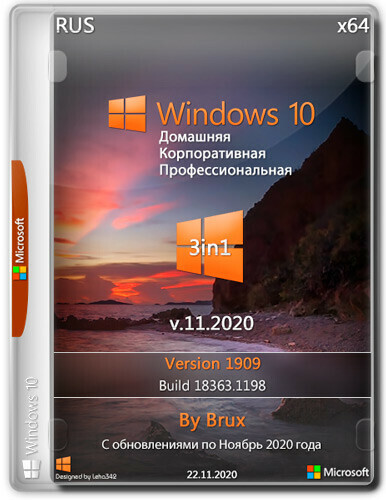



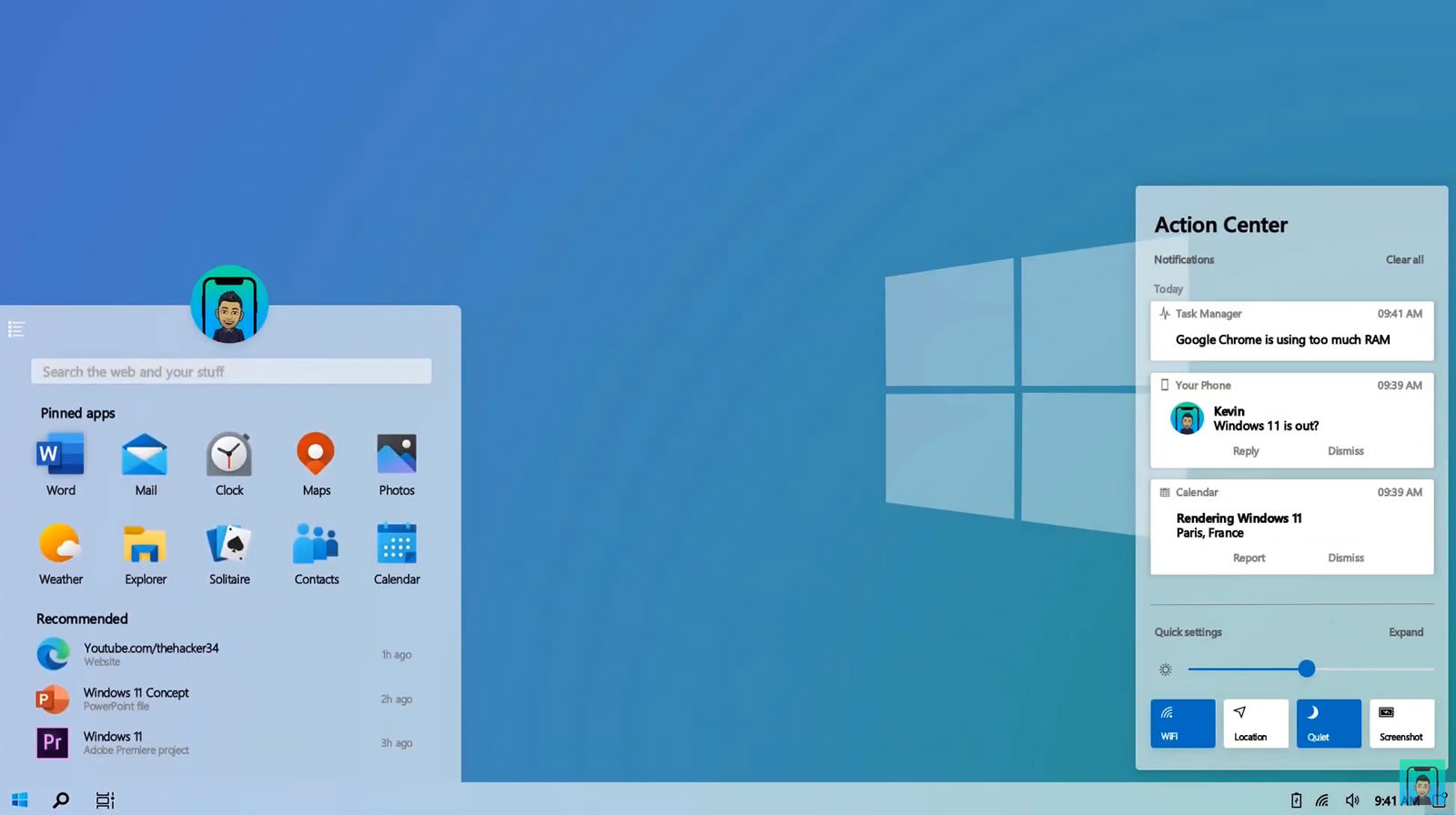

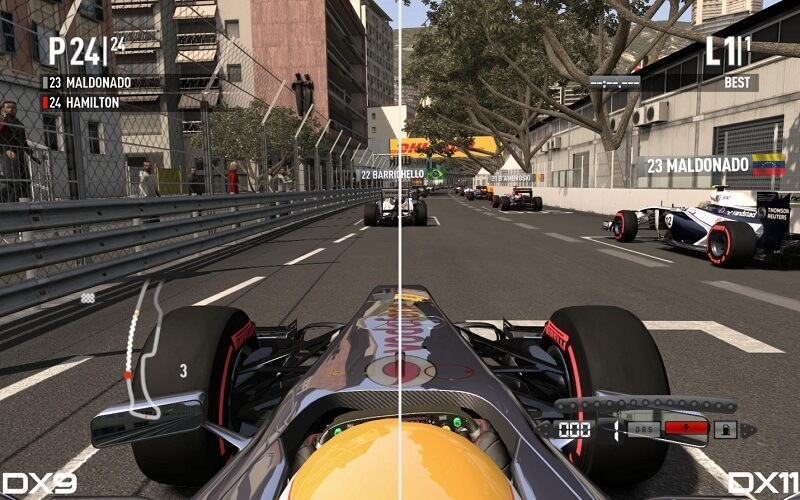










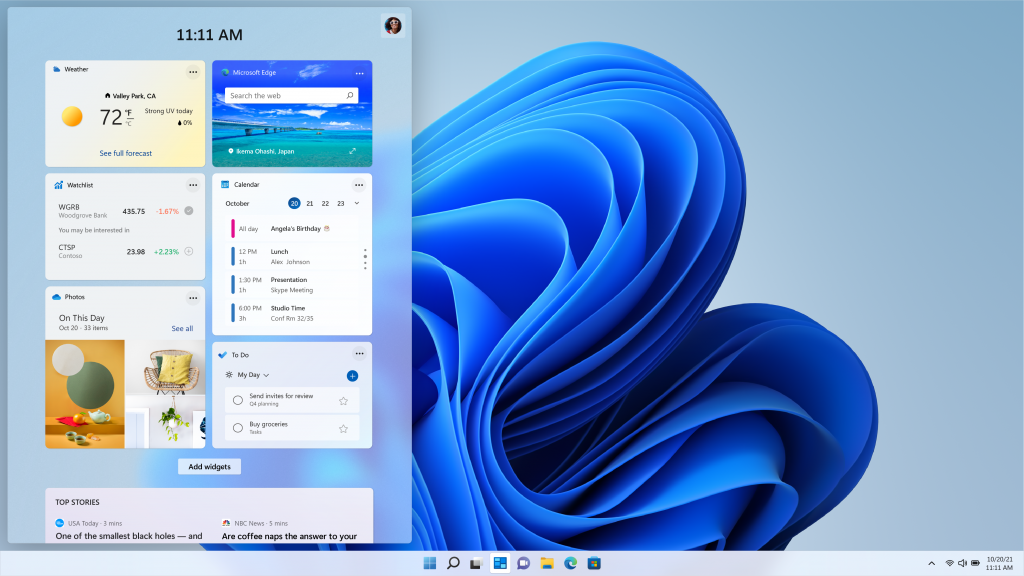



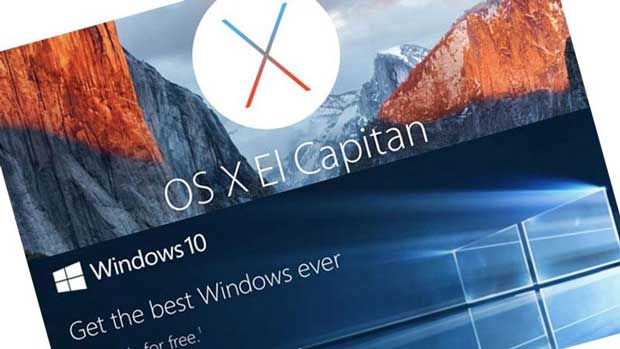

No comments:
Post a Comment
Note: Only a member of this blog may post a comment.